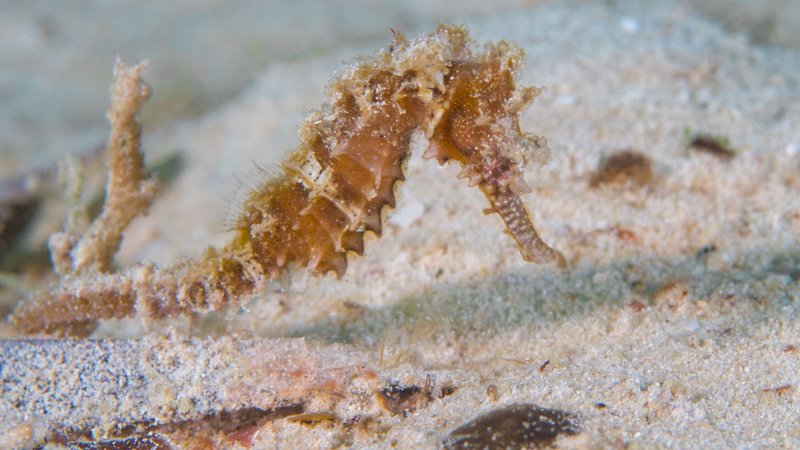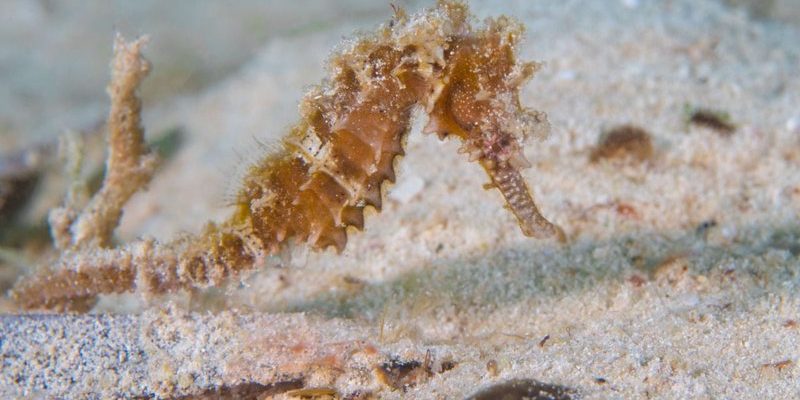
Here’s the thing: seahorses don’t have teeth, and they don’t chew their food like we do. Instead, they suck in their meals through a snout. It’s like having a built-in vacuum cleaner! This unique way of feeding means their diet usually consists of tiny shrimp and other small marine creatures. If you’re looking to care for these enchanting creatures, understanding their nutritional needs is essential. Let’s dive into the world of seahorse dining!
What Do Seahorses Typically Eat?
Seahorses are carnivorous, which means they primarily consume meat or animal-based foods. In the wild, their diet mainly consists of:
- Brine shrimp: These tiny shrimp are like the fast food for seahorses. They’re easy to catch and digest, making them a favorite.
- Copepods: Another small crustacean, copepods are abundant in the ocean and offer seahorses essential nutrients.
- Mysis shrimp: Slightly larger than brine shrimp, mysis shrimp are another tasty treat for these quirky fish.
So, what’s the big deal about these foods? Well, they provide the essential proteins, fats, and vitamins seahorses need to thrive. You might think of it as a well-balanced diet, where every little bite counts towards their overall health.
Feeding Seahorses in Captivity
If you’re lucky enough to have a seahorse as a pet, feeding them can be a bit of a challenge. They’re not the easiest fish to care for, but with the right approach, you can ensure they stay healthy and happy.
When feeding captive seahorses, you’ll want to provide a varied diet. Here’s what you can do:
1. Stick to frozen food: Frozen brine shrimp and mysis shrimp are widely available and easy to store. Plus, they retain their nutrients, making them an excellent choice for your seahorses.
2. Consider live food: Live brine shrimp can be an exciting treat for your seahorses. Watching them hunt can be fascinating! Just make sure you’re sourcing your live food from reputable suppliers to avoid introducing pests into your tank.
3. Use a feeding station: Seahorses can be a bit slow when it comes to catching their food. A feeding station—like a small, shallow dish—can help them find their meals without much hassle.
You might be wondering how often to feed seahorses. Generally, twice a day is ideal. Feed them small amounts, allowing them to consume what they can in about 5–10 minutes. This little routine mimics their natural foraging behavior in the wild.
Understanding Seahorse Feeding Behavior
Seahorses have some quirky feeding habits that are fascinating to observe. First, they are not fast swimmers, so they rely on ambush tactics when hunting. Their slow, methodical approach means they take their time to spot food, making them quite different from speedy fish.
Additionally, each seahorse has its own personality when it comes to feeding. Some might eagerly snatch up food as soon as you introduce it, while others may be more cautious. This behavior can be affected by their environment, stress levels, and even the lighting in your aquarium.
Here’s a fun fact: seahorses can eat about 30 to 50 times a day! Their small stomachs require a constant supply of food, almost like needing snacks throughout the day. That’s why it’s so important to keep your tank well-stocked with the right types of food.
Common Mistakes When Feeding Seahorses
Even seasoned seahorse owners can fall into traps when it comes to feeding. Here are a few common mistakes to avoid:
1. Overfeeding: It might be tempting to throw in a bunch of food, but too much can lead to water quality issues and health problems for your seahorses. Stick to smaller portions and adjust as needed.
2. Neglecting variety: Just like you wouldn’t want to eat the same meal every day, seahorses appreciate a varied diet. Offering just one type of food can lead to malnourishment or picky eaters.
3. Ignoring water quality: Feed more regularly can impact the water quality in your tank. Be sure to monitor it closely and perform regular water changes to maintain a healthy environment for your seahorses.
Being mindful of these mistakes ensures that your seahorses thrive and maintain a vibrant, healthy life.
Choosing The Right Food for Your Seahorse
When it comes to selecting food, not all options are created equal. You’ll want to choose high-quality products that cater to their dietary needs. Here are some tips:
- Look for nutrition labels: Always choose food that specifies high protein content and essential vitamins. This will help your seahorses develop strong immune systems.
- Choose reputable brands: Brands that specialize in aquarium food typically have better formulations than generic options.
- Consider flakes or pellets: Some seahorses may adapt to eating specially formulated pellets or flakes designed for them, but you’ll want to introduce these gradually.
You might be surprised at how picky some seahorses can be. They may refuse a new type of food at first, so take it slow and allow them to explore different options.
Feeding seahorses can be a rewarding but sometimes tricky task. They require specific types of food to stay healthy and thrive in both wild and captive environments. By providing a balanced diet of live and frozen foods, and by keeping an eye on their feeding habits, you can help ensure that your seahorses live long, happy lives.
Above all, keep learning about their needs and preferences. Seahorses, with their enchanting appearance and whimsical behaviors, deserve all the care we can give them. Happy feeding!

